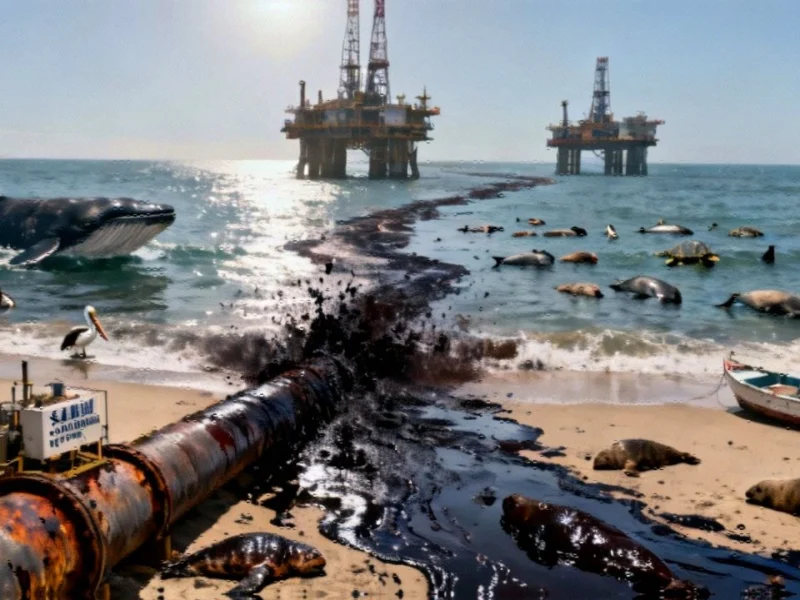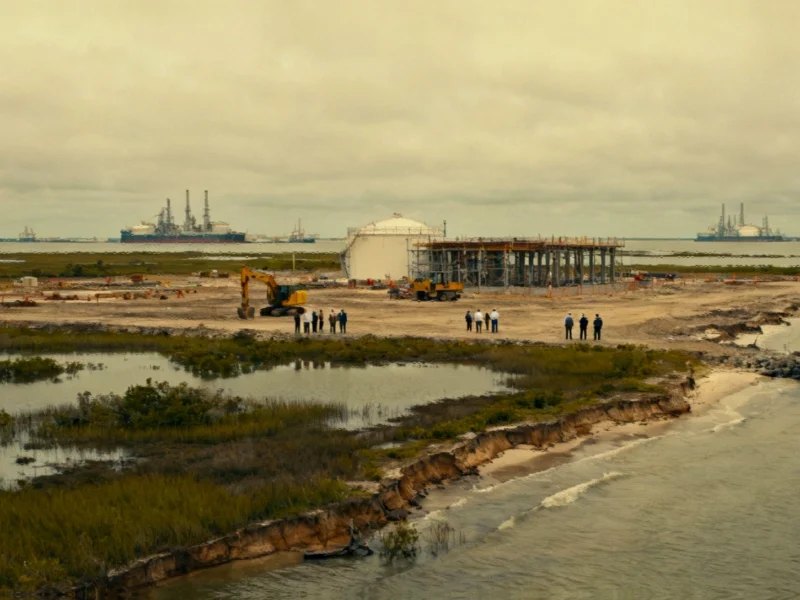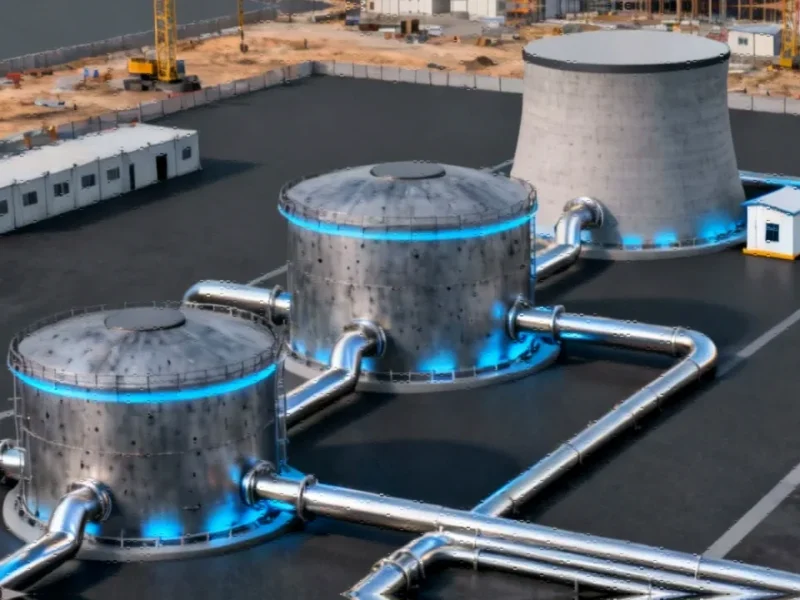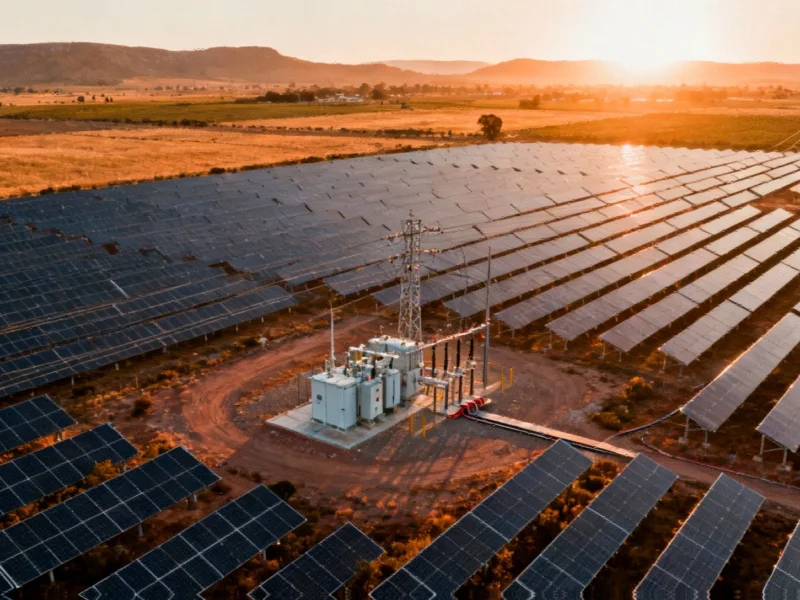Note: Featured image is for illustrative purposes only and does not represent any specific product, service, or entity mentioned in this article.
Pipeline Rupture Ignites Regulatory Battle
When a corroded pipeline burst in 2015, it unleashed California’s worst oil spill in decades, sending more than 140,000 gallons of crude oil along 150 miles of coastline from Santa Barbara to Los Angeles. The environmental devastation included contaminated habitats for endangered whales and sea turtles, along with significant mortality among pelicans, seals, and dolphins. The fishing industry suffered catastrophic losses, prompting Plains All American Pipeline to agree to a $230 million settlement in 2022 without admitting liability.
Federal investigators determined the Houston-based company failed to detect the rupture promptly and responded too slowly. The incident created substantial obstacles for pipeline replacement efforts, leading to the closure of three decades-old drilling platforms. However, another Texas-based fossil fuel company, backed by the Trump administration, has since acquired the operation and is determined to resume oil pumping through the pipeline system.
Federal Support Clashes with State Opposition
Sable Offshore Corp., headquartered in Houston, faces numerous legal challenges but remains committed to restarting production, even if confined to federal waters where state regulators hold limited authority. California controls only the 3 miles nearest to shore, while the platforms sit 5 to 9 miles offshore in federal jurisdiction. The Trump administration has championed Sable’s plans as emblematic of the president’s agenda to boost U.S. energy production by removing regulatory barriers.
President Donald Trump has directed Interior Secretary Doug Burgum to reverse previous administration bans on offshore oil drilling along both the East and West coasts. This policy shift represents significant industry developments in energy production, though it conflicts with California’s environmental priorities.
Environmental Concerns and Legal Challenges
Environmental organizations have mobilized against the project, with several groups filing lawsuits to block Sable’s operations. “This project risks another environmental disaster in California at a time when demand for oil is going down and the climate crisis is escalating,” said Alex Katz, executive director of the Environmental Defense Center, the Santa Barbara group formed after a massive 1969 spill.
The California Coastal Commission levied a record $18 million fine against Sable for ignoring cease-and-desist orders regarding repair work conducted without proper permits. Sable maintains it inherited valid permits from previous owner Exxon Mobil and has sued the commission while continuing pipeline work. A state judge has ordered temporary cessation pending court proceedings, and recently denied Sable’s request to dismiss the cease-and-desist orders.
Expanding Legal Troubles
Sable’s challenges extend beyond environmental regulations. The Central Coast Regional Water Quality Control Board, represented by the California attorney general’s office, recently sued the company for illegally discharging waste into waterways and violating state laws requiring permits for work along pipeline routes crossing sensitive wildlife habitats. The agency accused Sable of placing “profits over environmental protection in its rush to get oil on the market.”
Adding to their legal woes, the Santa Barbara District Attorney has filed felony criminal charges against Sable for polluting waterways and harming wildlife. The company denies these allegations, stating it has fully cooperated with agencies and that no wildlife was harmed during supervised operations. These legal battles highlight the complex intersection of corporate accountability and environmental protection.
Technological and Operational Responses
Despite opposition, Sable continues advancing its operations with support from federal agencies. The U.S. Interior Department’s Bureau of Safety and Environmental Enforcement announced in July it was working with Sable to bring a second rig online. The agency emphasized advancements in spill prevention and preparedness, noting the failed pipeline has undergone rigorous testing.
“Continuous monitoring and improved technology significantly reduce the risk of a similar incident occurring in the future,” the agency stated, pointing to recent technology improvements in pipeline safety. The bureau estimates approximately 190 million barrels of recoverable oil reserves in the area, representing nearly 80% of residual Pacific reserves.
Economic Arguments and Alternative Plans
CEO Jim Flores contends the project could alleviate California’s high gasoline prices by stabilizing supplies. “Sable is very concerned about the crumbling energy complex in California,” Flores stated. “With the exit of two refineries last year and more shuttering soon, California’s economy cannot survive without the strong energy infrastructure it enjoyed for the last 150 years.”
The company is seeking $347 million for project delays and has outlined contingency plans if state authorities block restarting the onshore pipeline system. Sable proposes using a floating facility to maintain entire operations in federal waters, transporting oil via tankers to markets outside California. This approach reflects broader industrial innovation in overcoming regulatory hurdles.
Broader Industry Implications
The conflict occurs against the backdrop of California’s ongoing transition from fossil fuels to clean energy. Santa Barbara County officials voted in May to begin phasing out onshore oil and gas operations, highlighting the state’s commitment to environmental sustainability. Meanwhile, the energy sector continues to evolve through technological advancement and changing market dynamics.
As legal proceedings continue and both sides prepare for extended battles, the outcome will likely influence future offshore drilling projects nationwide. The case represents a critical test of federal versus state authority in energy policy and environmental protection, with implications for coastal communities and energy independence debates across the United States.
This article aggregates information from publicly available sources. All trademarks and copyrights belong to their respective owners.



